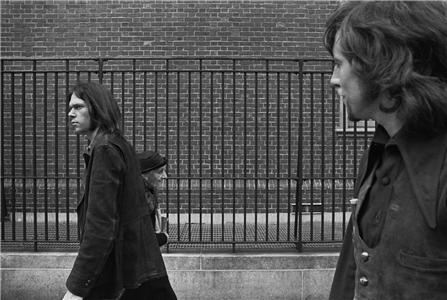 | |||
 | |||

|
After the Gold Rush by Neil Young - Album Cover Location 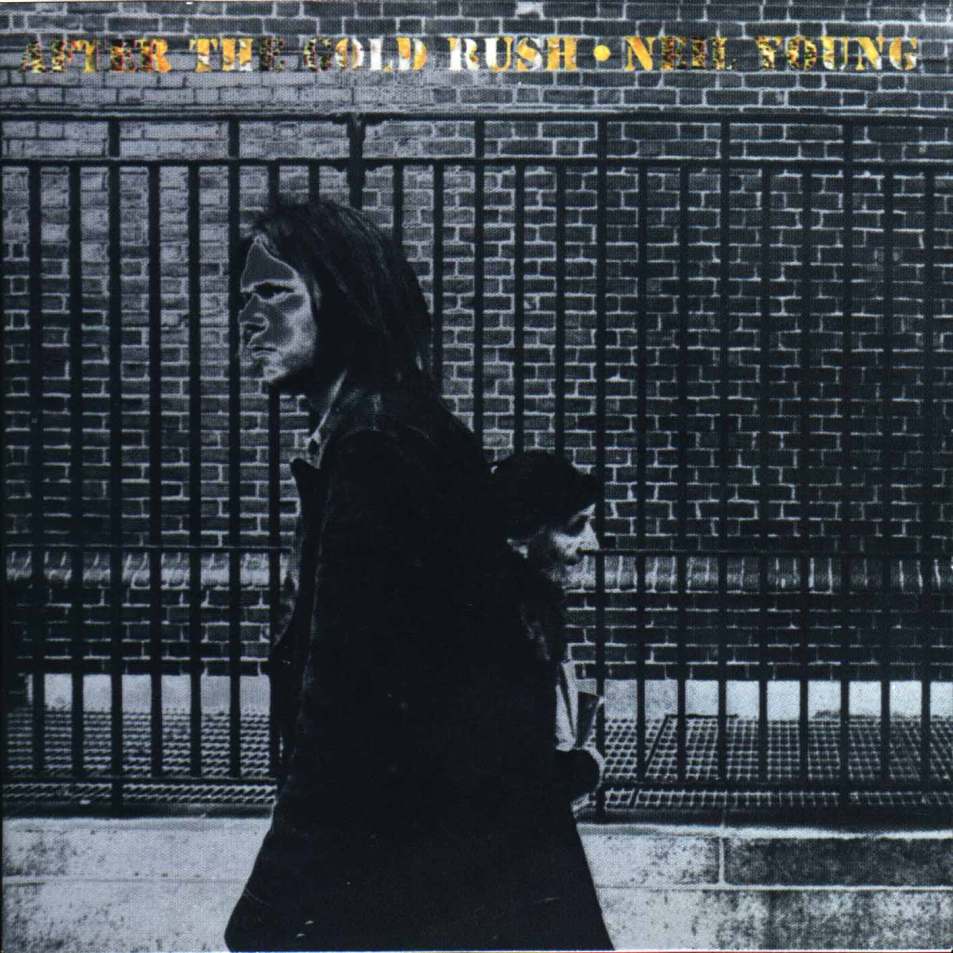
The album cover. 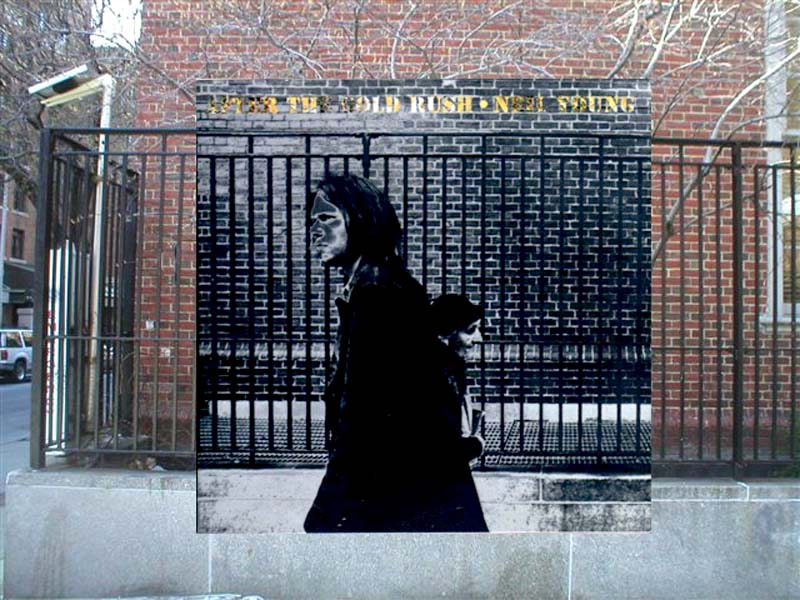
A composite of the cover on the block it was taken. (Below: a special photo sent to PopSpots from Joel Bernstein: the original uncropped picture - which includes Graham Nash. More on this in the addendum following the web entry.) 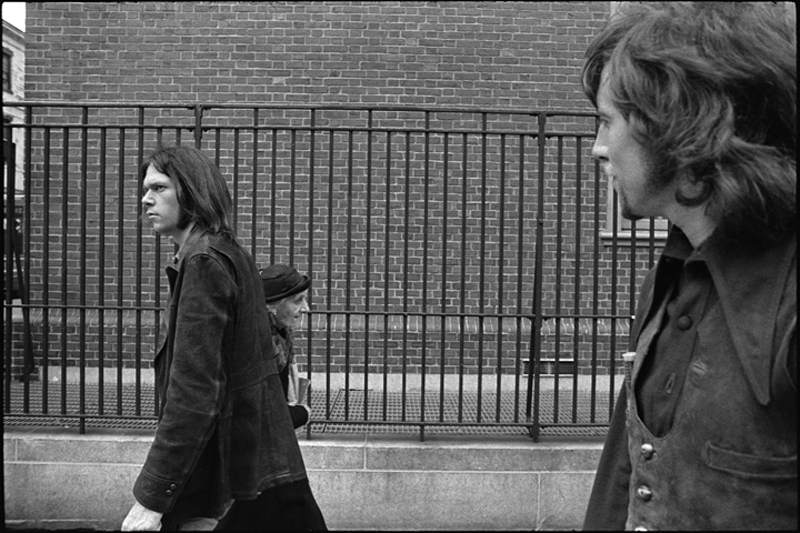
Photo (c) Joel Bernstein 1970 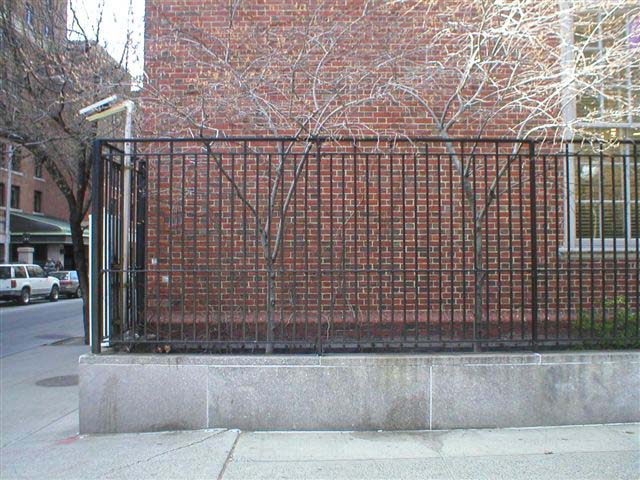
The northwest corner of Sullivan Street and West 3rd Street, Greenwich Village, New York. 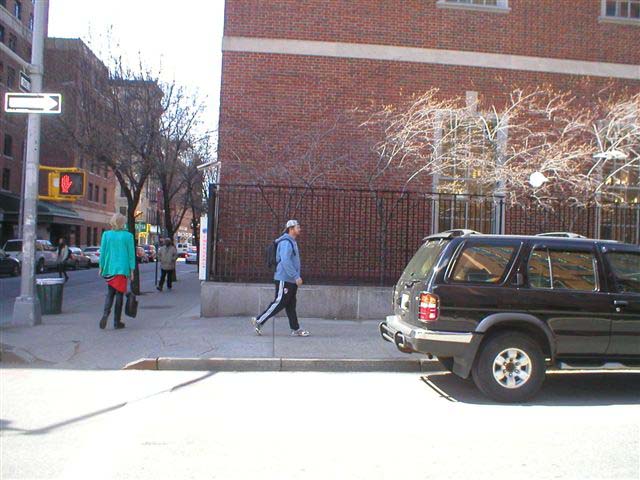
The view from further back... 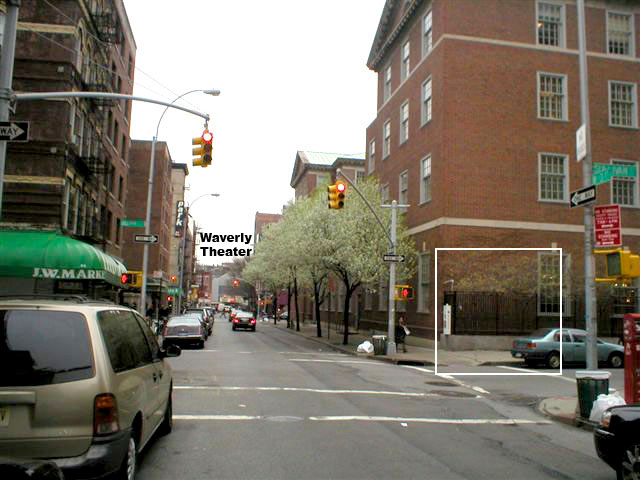
...and still further back... 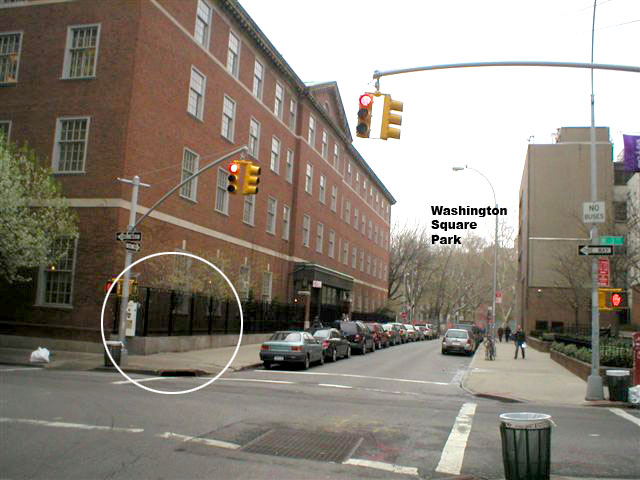
...and from another angle, looking north. (NOTE: What follows below the double lines is the text from my original entry on how I went about trying to figure where the photo was taken. Now that Joel Bernstein has sent in his photo confirming where I guessed the photo to have been taken, some of this, excluding the maps, is "academic" at this point, and you might want to skip to the addendum, where Joel describes his photo in more detail.) The building to the left (in the photo above) is the side wall of the NYU Law School (Vanderbilt Hall). As we shall see, the actual location where Neil was walking, though it could have been in the depicted circle, was probably mid-block, but the entire fence and small brick base was taken up sometime between 1981 and 1987 when an underground law library was put in under the street and four windows on the law school's side were replaced with one large central window. 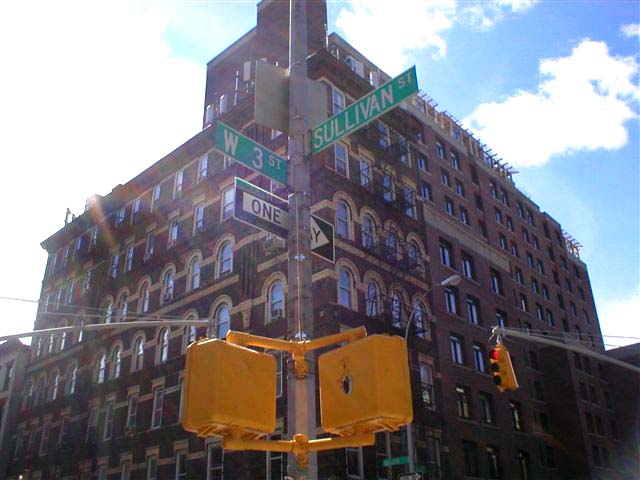
Here's the street corner sign. 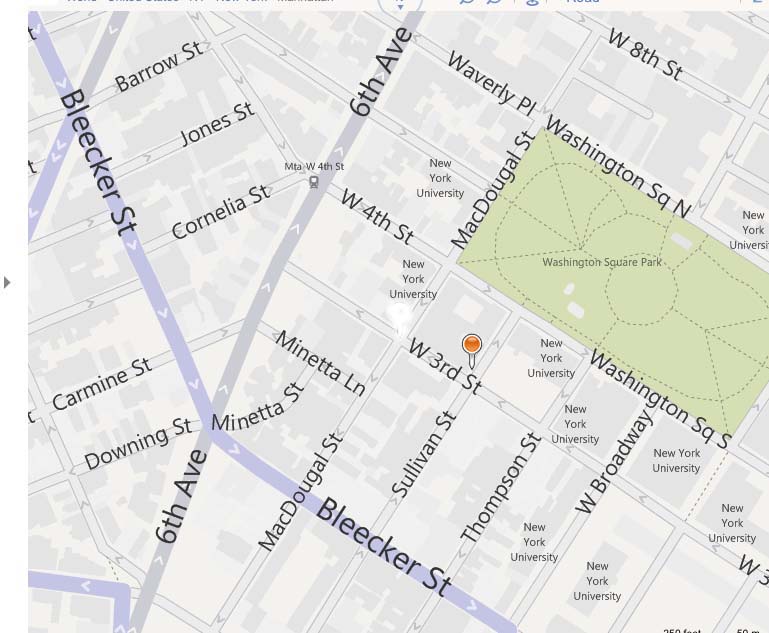
Here's a map of the site area from Bing Maps. 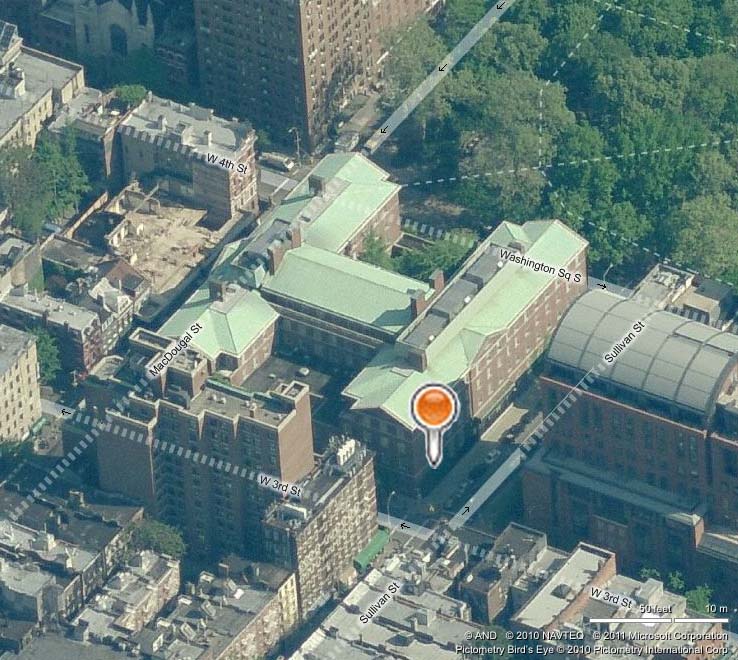
This is an overhead shot of the law school (from Bing Maps: Bird's-eye view). Washington Square Park is on top. On the left side of the law school is Macdougal Street, the site of many famous folk and rock clubs in the 60's where Neil used to play. (There are several clubs, like the Cafe Wha?, still going strong today.) 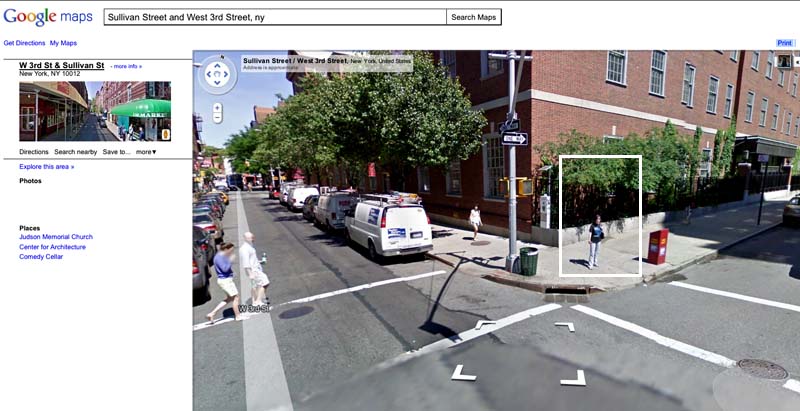
If you want to find this space on Google Street Views, go to Google Maps, type in "Sullivan Street and West 3rd Street, NY" and click. When the resulting page comes up, then click on the "street view" panorama in the top left and then, when the view is on the street, spin the picture around with the "knob" on the circle in the upper left. 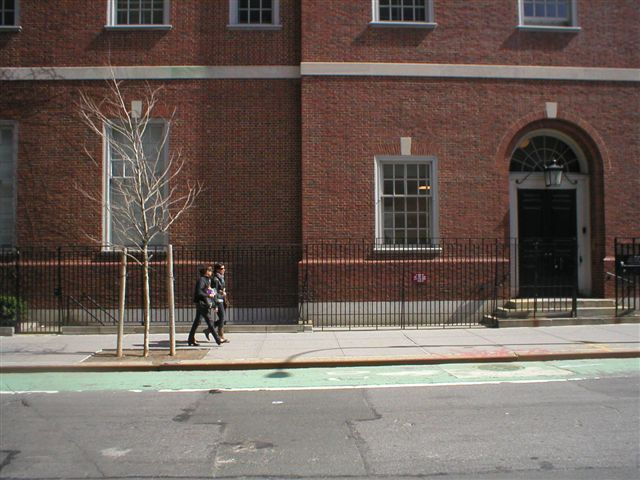
This is the Macdougal Street side of the law school, at midbuilding. 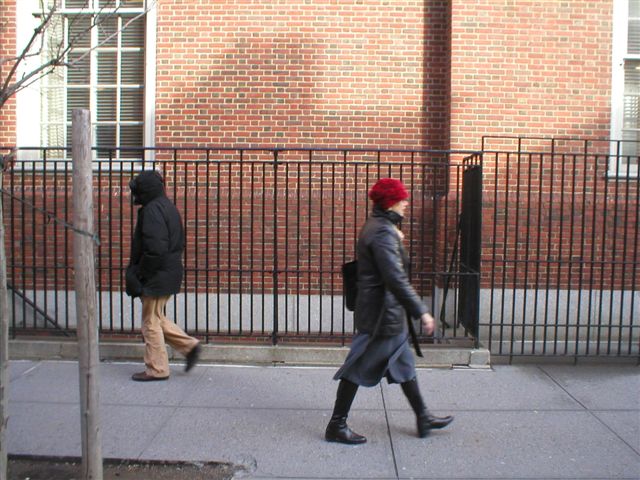
The same space on Macdougal in a closeup. On the album cover there is also a metal grate behind the wall, which was a second indication to me, in addition to the 4-foot brick decorative "outerwall," as to the fact that the photo wasn't taken on this side. 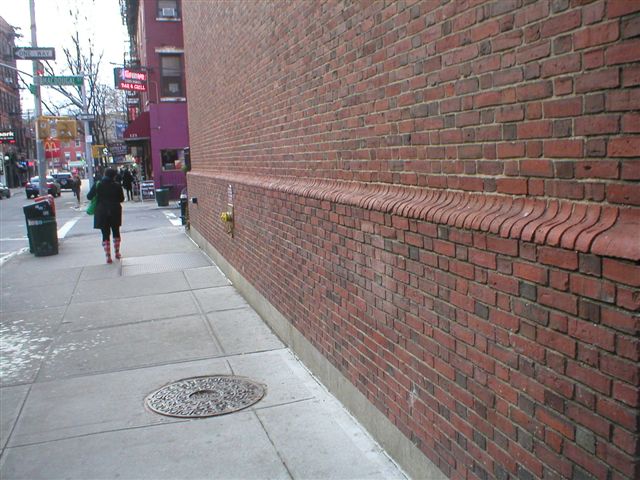
Here's a continuation of the 4-foot-tall decorative brick ledge around the back of the building. 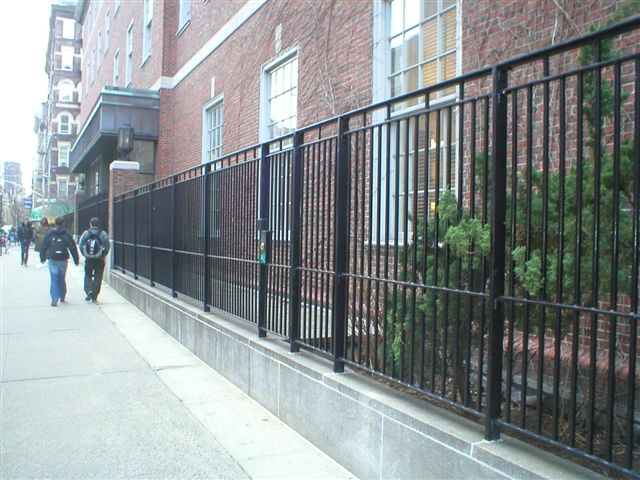
Here, on the Sullivan Street side of the law school, you can see that the protruding decorative brick wall (in architectural terms it's called a "water table" - thanks, Janice Carapellucci) is at about the 1 to 2-foot level, as you can see it is in the album cover photo. 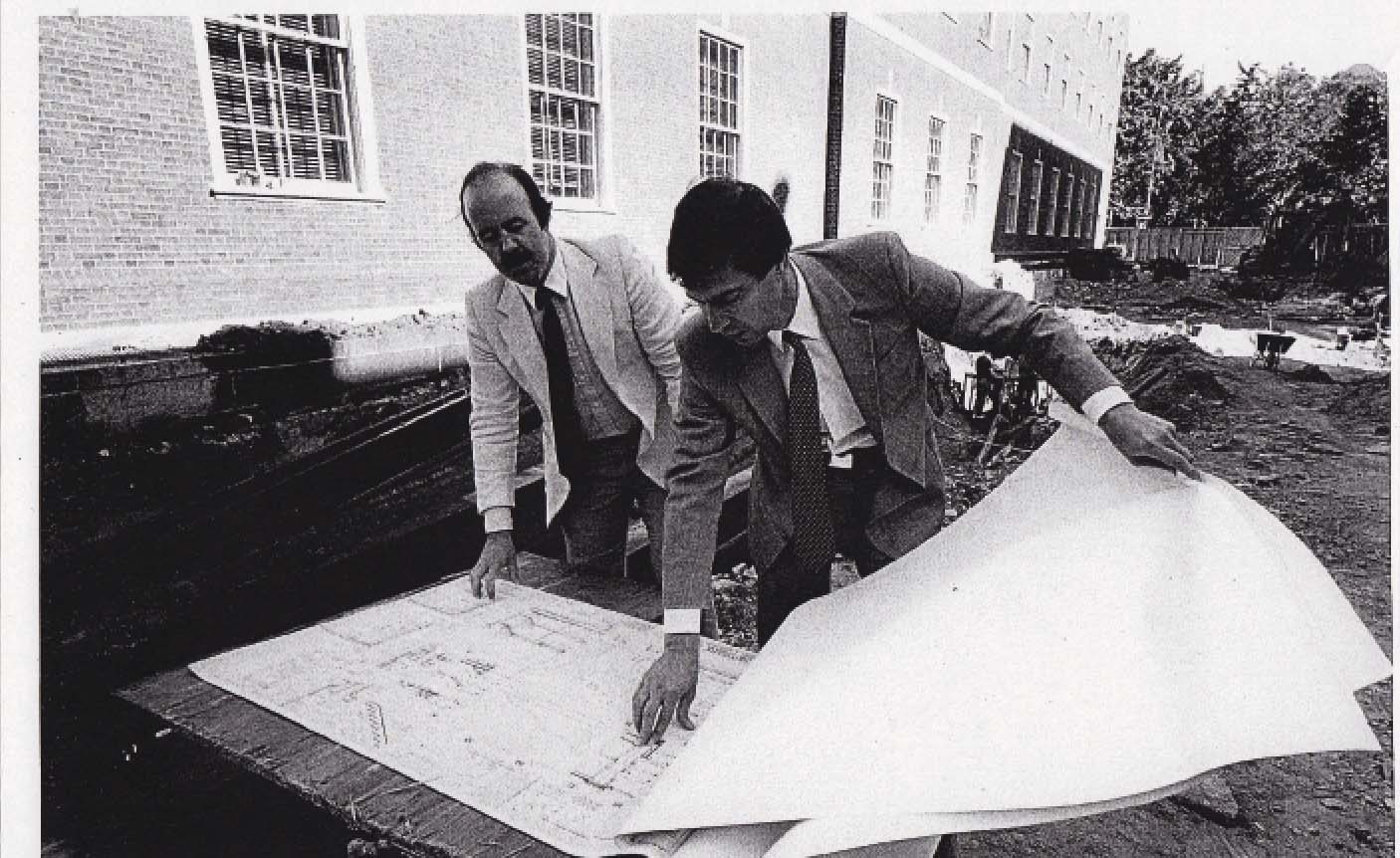
Here's a photo from the NYU Archives (and thank you to the office and staff) of the architects working to add the new basement law library under Sullivan Street sometime between 1981 and 1987 (Officially: The NYU School of Law - Law Library Extention). 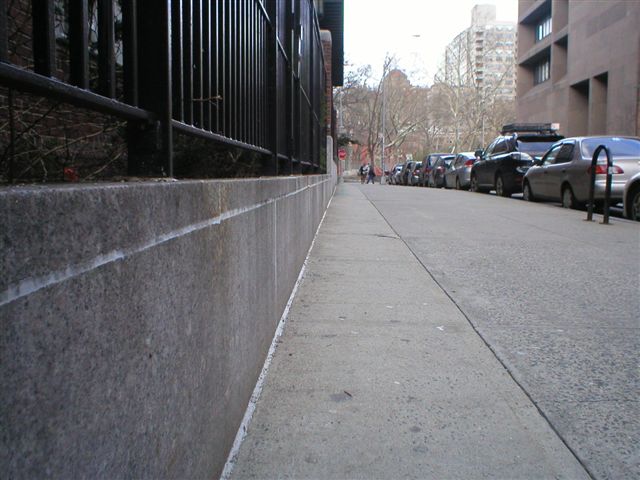
After the reconstruction, the horizontal stone slabs all seem to be uniform height -- about 3.5-4 inches thick." 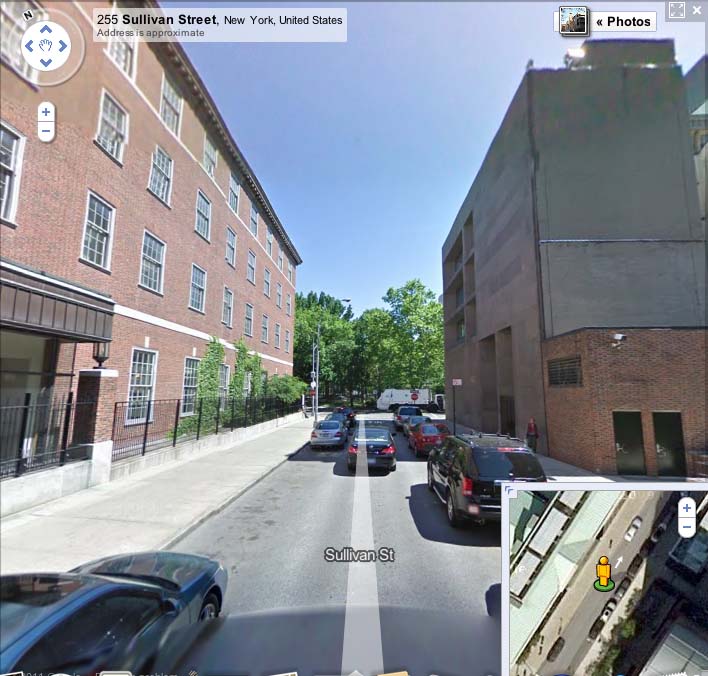
Sullivan Street after the construction. There's a huge new series of glass windows mid-block, where I think the original photo was probably taken, because, as much as the space I depicted in the opening shots looks like the actual space, there's no grating behind the fence as there is in the original cover shot. 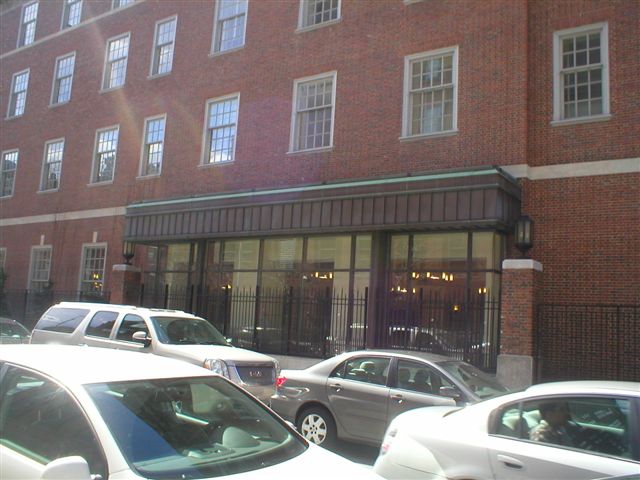
The window. 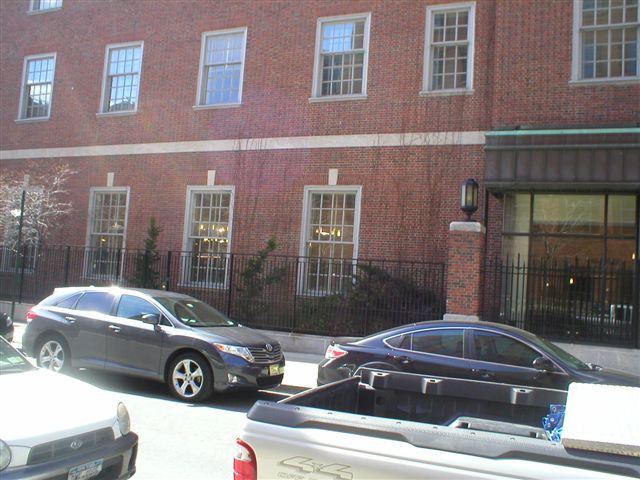
If the actual photo was shot mid-block - it was probably in one of the all brick side spaces to the left or right of these large windows. This is because you can't see any windows on the cover shot and the shot contains enough fence to show 8 of the little horizontal rectangles that make up the top part of the fence. On the album, the brick work on the top left seems deteriorated by water. There's also one little brick that seems smaller than all the others touching the "A" in the word "After." I have looked but have not been able to match up an area on the brickwork like it, so I think it was replaced in adding the underground library. 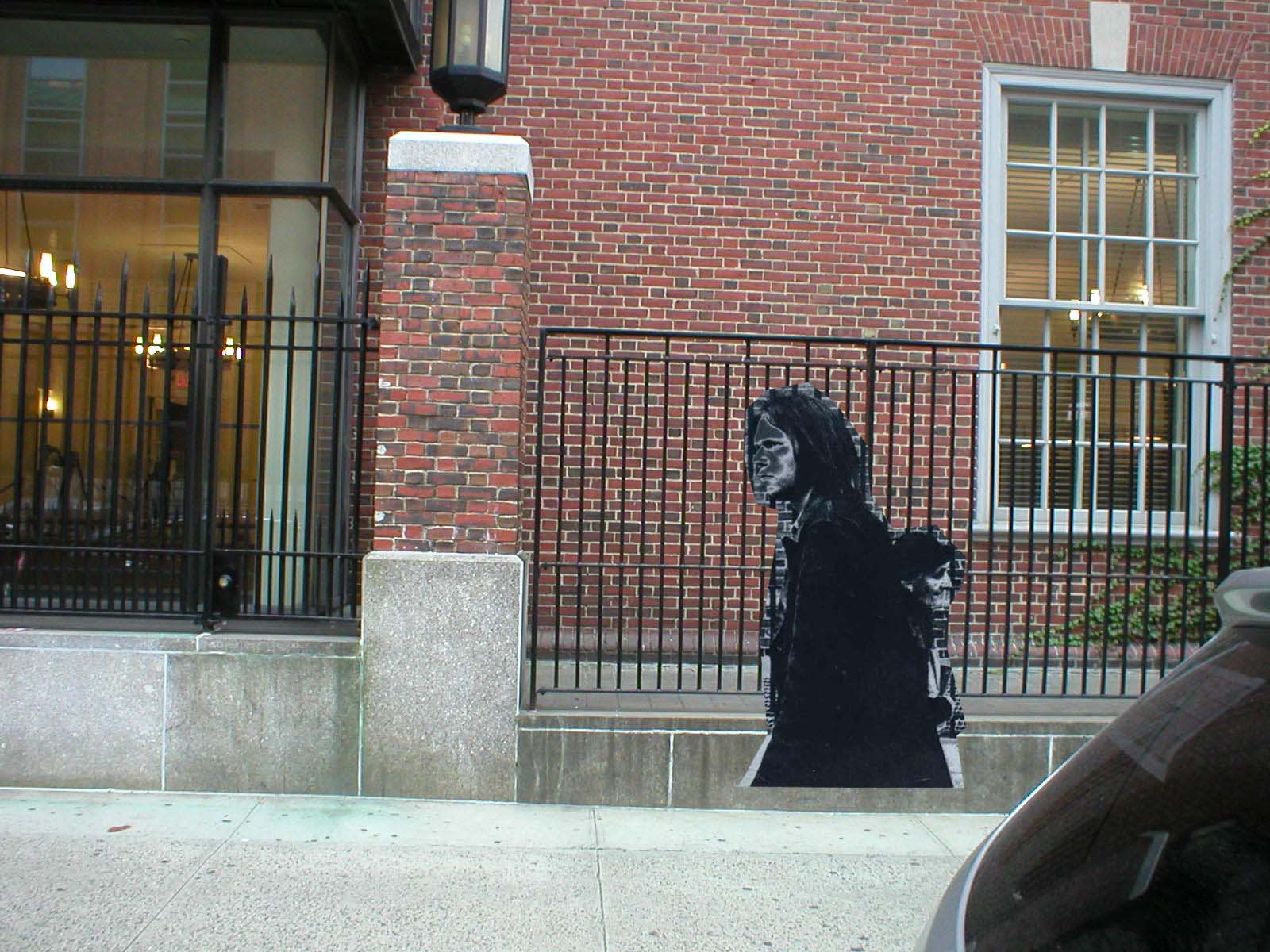
Composite -- the right side space. About the Album: After the Gold Rush was released by Reprise Records in August 1970 and shows up on many "Top 100 Albums of All Time" lists, including those of Rolling Stone and Time Magazine. The album includes such songs as "Southern Man," "Only Love Can Break Your Heart," and "When You Dance I Can Really Love." (WIkipedia) Well that's it. Neil - long may you run! Wait! This just in...read the addendums below to learn about the unedited photo of the album cover shot that has just been released. (Addendum #1 - June, 3, 2011) (Addendum #2 - June, 5, 2011) Graham Nash emails PopSpots: "Nice article Bob...enjoyed it. - Best, Graham" Thank you, Graham! (Addendum #3 - June 5, 2011) Having been sent a link to Popspots from a collegue, the photographer of the "After the Gold Rush" album shot himself, Joel Bernstein, emailed Popspots and graciously offered to help pinpoint the exact location of the shot. Looking at his proof sheet, he could see that the group took some frames in Washington Square Park, then walked down Sullivan Street and took the picture at the corner of West 3rd Street(more on this in a minute). And in a really welcome gesture he offered to send an unedited, full frame of the newly released photo that includes Graham Nash - but one that also that also depicted the end of the brick building on the left. It's here below: 
Photo (c) Joel Bernstein 1970 So I took the image and made a composite with the building on Sullivan Street to see how it matched up. It's here: 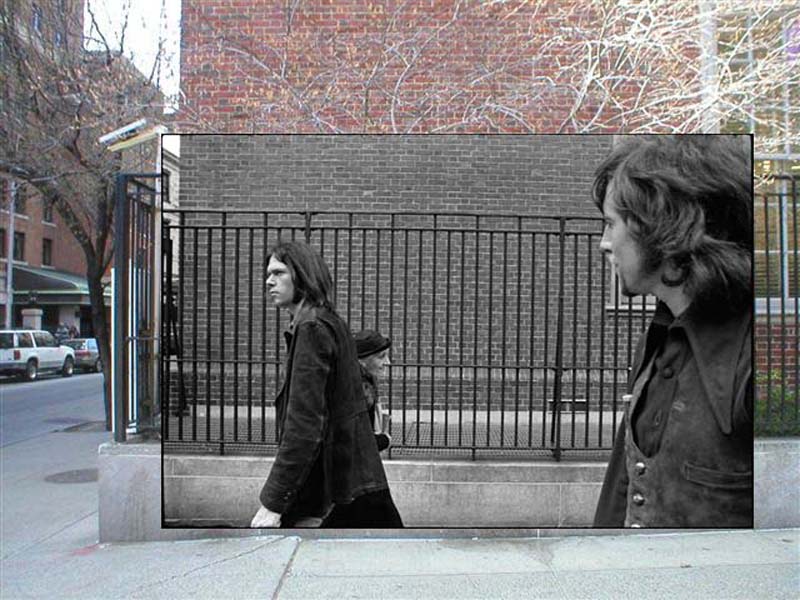
Insert Photo (c) Joel Bernstein 1970 As you can see, it matches with the corner: the end of the building is on the left and there's a white window on the right. That looks pretty convincing. That's the spot! Thank you, Joel, for all the help. Two final notes to this addendum: 1) In Joel's new photo, to the left of the brick building wall, you can see the side of a building about 4 or 5 stories tall down the street. That matches up with a building that was there then, that has now been incorporated into an NYU dorm. 2) Joel remembered that he took the photo standing on the sidewalk with a 28-mm wide lens. So, in the future I will do the same and see if Ie can get an exact match from wall to window (and maybe a small woman will walk into frame while we are doing it, too!) (Addendum 4 - June 5, 2011) As I referred to at the beginning of this entry, in an email to PopSpots Joel Bernstein cleared up the confusion about being quoted as saying the the shot was "accidental" He writes:
"The photo was not "a mistake." I saw the small, old woman coming towards us down the sidewalk, was intrigued, and wanted to catch her passing Neil. The mistake, to me, was that I had in my haste focused the lens just past the two figures, closer to the fence than to Neil's face. That was the original reason why I made a small-sized print and solarized it; to help with the apparent sharpness. But the solarization in this case added a somewhat spooky dimension to the image, which Neil took to immediately."
Joel also helped clear up something that had remained a mystery to me - why some of the smaller bricks above the fence weren't still there. He write that in designing the final artwork to be photographed for the cover: "For some reason Gary chose to strip in rows of bricks instead of using those which were there. If you look on the cover, you can clearly see the cut line 3 brick layers above the top of the fence. The small brick is in the layer that has been stripped in, and (though I haven't looked yet) is probably from higher up the wall than it appears on the cover." (Addendum 5 - November 14, 2011) Not only was Graham Nash "off-screen," but art director Gary Burden was there, too! Gary Burden*, the album's art director writes in: "Wow! Your piece placing the album cover shot in context is mind blowing and caused me to have an acid flashback. I am Gary Burden, Neil Young's long time visualist and art person. I art directed the taking of this photo and was standing right there behind Joel when the shutter clicked. Very good idea and execution." (And in a later email he added to Joel's story of the bricks) "Joel is correct, I did add some bricks to the top in order to have room for the title type. Yep, the size of the bricks is a little off, but in defense, I would say that that was in the days long before there was anything like photoshop and everything I did was stripped together on dye transfer prints and retouched with an air brush." 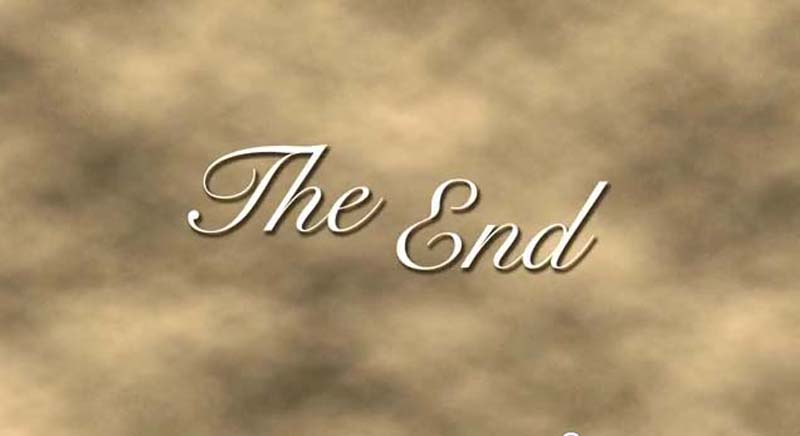
|
||

